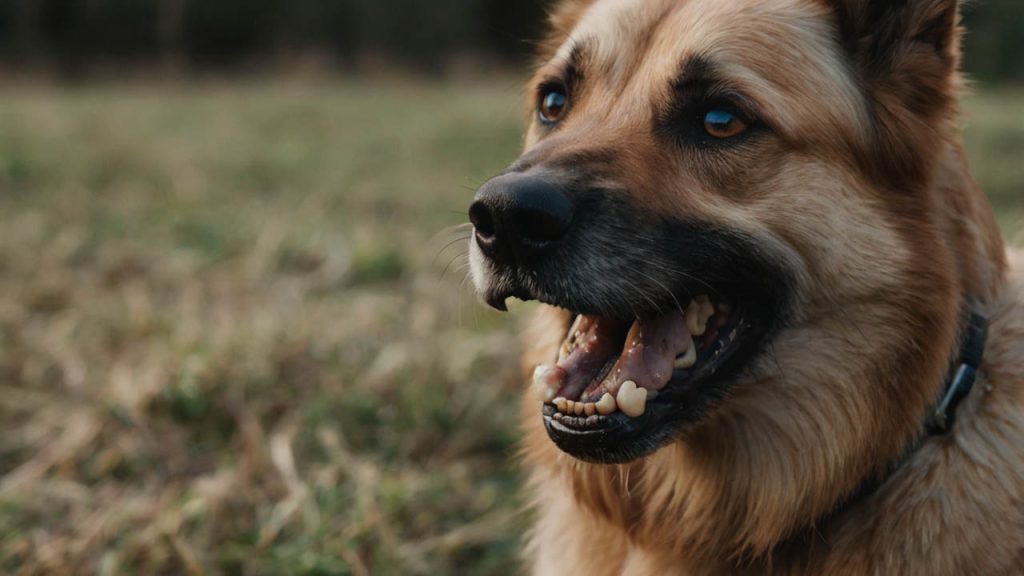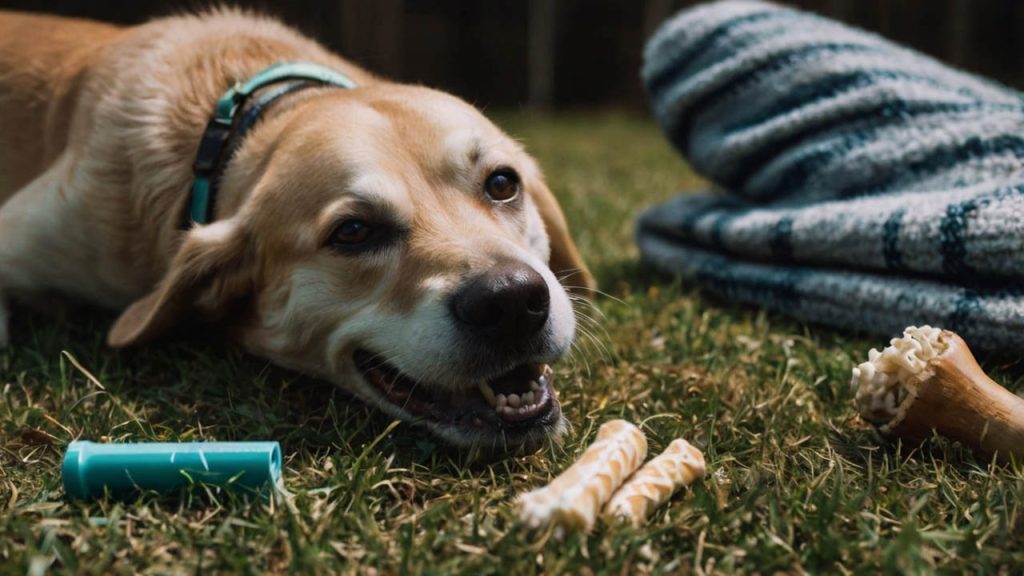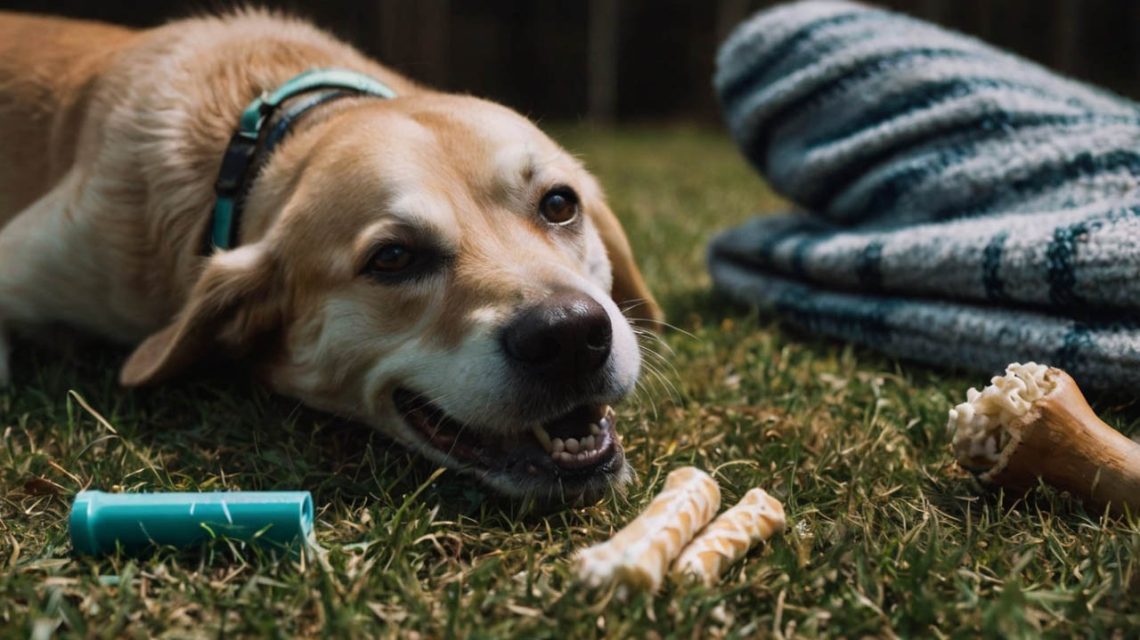Introduction: Eliminating Bad Dog Breath Through Quality Chews
Discovering the best dog chews for bad breath can transform your daily interactions with your beloved pet while addressing underlying oral health issues that affect millions of dogs worldwide. According to the American Animal Hospital Association, periodontal disease affects 80% of dogs by age three, with halitosis serving as the most common early warning sign that pet owners notice. Moreover, research from veterinary dental specialists indicates that high-quality dental chews can reduce plaque buildup by up to 75% when used consistently as part of a comprehensive oral care routine.
The market for the best dog chews for bad breath has evolved significantly as pet owners recognize the connection between oral health and overall wellbeing. Studies published in the Journal of Small Animal Practice demonstrate that untreated dental disease leads to systemic health problems affecting the heart, kidneys, and liver through bacterial spread via the bloodstream. Furthermore, investing in effective breath-freshening chews proves far more economical than professional dental cleanings averaging $700-1,500 or advanced periodontal treatments costing several thousand dollars.
Selecting truly effective chews requires understanding the science behind halitosis, recognizing quality indicators, and matching products to your dog’s specific needs. While hundreds of products claim breath-freshening benefits, only those with proven ingredients, appropriate textures, and proper formulation deliver lasting results. Therefore, this comprehensive guide examines evidence-based solutions, key selection criteria, top-performing products, and implementation strategies to help you choose the most effective breath-fighting chews for your canine companion.
Why Best Dog Chews for Bad Breath Matter
Understanding the Root Causes of Canine Halitosis
Before selecting the best dog chews for bad breath, understanding what causes halitosis helps target the right solution effectively. Bacterial overgrowth in the mouth produces volatile sulfur compounds (VSCs) responsible for that distinctive “doggy breath” smell. Subsequently, these bacteria thrive on food particles trapped between teeth, along the gum line, and in periodontal pockets, creating biofilms that protect them from natural cleansing mechanisms.
Periodontal disease progresses through four stages, each worsening breath quality progressively. Stage one involves mild gingivitis with slight redness and occasional bad breath. By stage four, severe bone loss, tooth mobility, and intense halitosis require extensive veterinary intervention that chews alone cannot address. Research indicates that 85% of dogs over age four show some degree of periodontal disease.
Diet and systemic health significantly influence breath quality beyond dental factors. High-protein diets can cause temporary ammonia-like breath, while kidney disease produces a distinctive urine-like odor. Furthermore, diabetes may cause sweet or fruity breath, and gastrointestinal issues often manifest as foul-smelling halitosis requiring medical attention rather than just dental chews.

How Dental Chews Combat Bad Breath
The best dog chews for bad breath work through multiple mechanisms to address halitosis at its source. Mechanical abrasion during prolonged chewing physically removes soft plaque before it mineralizes into tartar. The Veterinary Oral Health Council reports that chews requiring at least 30 seconds of chewing per piece demonstrate significantly better plaque reduction than quickly consumed treats.
Active ingredients distinguish effective breath-freshening chews from basic rawhides or toys. Chlorophyll acts as nature’s deodorant, neutralizing odors at the molecular level while providing systemic detoxification. Enzymes like glucose oxidase and lactoperoxidase break down bacterial biofilms and inhibit new colony formation. Additionally, specific probiotics introduce beneficial bacteria that outcompete pathogenic organisms for resources and space.
Texture and composition determine cleaning effectiveness beyond ingredient benefits. Chews with ridges, nubs, or fibrous structures that flex around teeth during chewing provide superior mechanical cleaning. The ideal hardness balances effective plaque removal with safety, avoiding tooth fractures while maintaining structural integrity throughout extended chewing sessions.
Best Dog Chews for Bad Breath: Premium Options
Enzymatic Dental Chews
Enzymatic formulations represent the gold standard among the best dog chews for bad breath due to their dual-action approach. These products combine mechanical plaque removal with biological warfare against odor-causing bacteria. Leading manufacturers incorporate patented enzyme systems that continue working even after the chew is consumed, providing extended breath protection.
Virbac C.E.T. Enzymatic Oral Hygiene Chews lead this category with their dual-enzyme system featuring glucose oxidase and lactoperoxidase. Clinical studies demonstrate 70% plaque reduction and 45% tartar reduction with daily use over 30 days. The beef-hide base provides 5-10 minutes of chewing time while appealing to most dogs’ taste preferences. Furthermore, five size options ensure appropriate selections for all breeds.
Vetoquinol Enzadent Oral Care Chews utilize a triple-enzyme system including amylase, glucoamylase, and glucose oxidase. These enzymes work synergistically to break down food particles, starches, and bacterial biofilms. Research shows significant breath improvement within one week of daily use, with continued improvement over time.
Natural and Organic Chews
Natural options among the best dog chews for bad breath appeal to health-conscious owners seeking chemical-free solutions. These products rely on plant compounds, essential oils, and whole food ingredients to combat halitosis naturally. Subsequently, many provide additional health benefits including improved digestion, immune support, and reduced inflammation.
Greenies Original Dental Dog Chews pioneered the natural dental chew market with their highly digestible, plant-based formula. Containing natural chlorophyll from alfalfa, these chews neutralize odors while their unique texture cleans down to the gum line. Independent studies show daily use reduces tartar by 68% and plaque by 57%, with noticeable breath improvement within three days.
Whimzees Natural Dental Chews feature limited ingredients including potato starch, glycerin, and natural colorants from vegetables. Their distinctive shapes—alligators, hedgehogs, and toothbrushes—encourage prolonged chewing while grooves and ridges maximize cleaning action. Moreover, these vegetarian chews suit dogs with protein allergies while effectively freshening breath through mechanical action.
Key Features of Best Dog Chews for Bad Breath
Active Ingredients That Fight Odor
Understanding ingredients helps identify the most effective best dog chews for bad breath for your pet’s specific needs. Sodium hexametaphosphate (SHMP) binds calcium in saliva, preventing tartar formation while existing plaque softens for easier removal. Products containing 0.5-1% SHMP show measurable tartar reduction in clinical trials.
Zinc compounds reduce bacterial growth and VSC formation directly. Zinc gluconate and zinc ascorbate demonstrate superior bioavailability compared to zinc oxide, providing better breath-freshening results. Studies indicate that zinc-enhanced chews reduce oral malodor by 40% more than standard formulations.
Probiotics represent cutting-edge technology in modern breath-freshening chews. Bacillus coagulans and Enterococcus faecium survive stomach acid to colonize the mouth, competing with pathogenic bacteria. Clinical research shows probiotic-enhanced chews provide 50% better long-term breath improvement compared to traditional formulations.
Texture and Design Elements
The physical characteristics of the best dog chews for bad breath significantly impact their effectiveness. Porosity creates more surface area for mechanical cleaning while allowing active ingredients to penetrate deeper. Microscopic analysis reveals that porous chews remove 30% more plaque than smooth alternatives.
Flexibility ensures chews conform to tooth surfaces during biting, maximizing contact and cleaning action. Chews that maintain flexibility throughout use provide consistent cleaning from start to finish. Furthermore, flexible chews reduce fracture risk in aggressive chewers while maintaining effectiveness.
Size and shape optimization ensures appropriate chewing duration and complete mouth coverage. X-shaped or star-shaped designs reach between teeth better than simple cylinders. Additionally, size-specific formulations ensure small dogs aren’t overwhelmed while large dogs receive adequate cleaning action.
Best Dog Chews for Bad Breath by Size
Small and Toy Breed Options
Small dogs require specially formulated best dog chews for bad breath addressing their unique anatomical needs. Toy breeds often have overcrowded teeth creating additional plaque-trapping spaces requiring targeted cleaning. Subsequently, appropriately sized chews that encourage thorough chewing without causing jaw fatigue prove most effective.
Milk-Bone Brushing Chews Daily Dental Mini Treats cater specifically to dogs under 25 pounds. Their patented twist design with nubs and ridges reaches between crowded teeth while maintaining appropriate hardness for smaller jaws. Clinical trials demonstrate 25% reduction in tartar buildup and significant breath improvement with daily use.
Pedigree Dentastix Fresh Toy/Small Treats combine an X-shape design with active ingredients including zinc sulphate and green tea extract. The unique shape ensures four cleaning surfaces contact teeth simultaneously. Research shows measurable breath freshening within five days of daily administration.
Large and Giant Breed Solutions
Large dogs need robust best dog chews for bad breath that withstand powerful jaws while providing extended chewing sessions. Bigger chews must maintain structural integrity without becoming choking hazards when broken into pieces. Additionally, large breeds accumulate more plaque due to larger tooth surface areas, requiring more aggressive cleaning action.
Nylabone Advanced Oral Care Natural Dog Chews feature raised dental nubs that clean teeth and massage gums during extended chewing. Their durable construction suits power chewers while freshening breath through mechanical action and natural ingredients. Studies indicate these chews reduce plaque more effectively than rope toys or standard rawhides.
Blue Buffalo Dental Bones Large Dog Chews combine wholesome ingredients with effective cleaning action. Their unique shape targets molars where plaque accumulates heavily in large breeds. Furthermore, added parsley and alfalfa provide natural breath freshening while vitamins support gum health.
How to Choose the Best Dog Chews for Bad Breath
Evaluating Safety and Quality
Selecting safe and effective best dog chews for bad breath requires careful evaluation of multiple factors. Digestibility testing ensures chews break down appropriately without causing intestinal blockages. Products with 85% or higher digestibility ratings significantly reduce obstruction risks while maintaining cleaning effectiveness.
Manufacturing standards indicate product quality and safety. Chews produced in facilities following Good Manufacturing Practices (GMP) maintain consistent quality. Additionally, third-party testing for contaminants, including heavy metals and bacteria, provides extra safety assurance.
The Veterinary Oral Health Council (VOHC) seal represents the gold standard for efficacy verification. Products earning this designation undergo rigorous testing proving measurable plaque or tartar reduction. Furthermore, VOHC-approved chews demonstrate safety through extensive feeding trials.
Matching Chews to Your Dog’s Needs
Individual factors determine which best dog chews for bad breath suit specific dogs optimally. Age influences selection significantly—puppies need softer chews for developing teeth, while seniors may require gentler options for worn or missing teeth. Subsequently, life-stage-appropriate formulations ensure safety and effectiveness.
Chewing style affects product selection critically. Aggressive chewers need extremely durable options that won’t break into dangerous pieces. Conversely, gentle chewers benefit from softer chews ensuring adequate cleaning action occurs. Observing your dog’s chewing habits with different textures helps identify appropriate hardness levels.
Health conditions may restrict certain chews or ingredients. Dogs with kidney disease should avoid high-protein chews, while diabetic dogs need low-glycemic options. Furthermore, allergic dogs require limited-ingredient or novel-protein formulations to prevent reactions while addressing breath issues.

Using Best Dog Chews for Bad Breath Effectively
Proper Administration Guidelines
Maximizing benefits from the best dog chews for bad breath requires consistent, appropriate administration protocols. Daily use provides optimal plaque control and breath freshening, as even 48-hour gaps allow significant bacterial regrowth. Research indicates that twice-daily administration may provide superior results for dogs with severe halitosis.
Timing influences chew effectiveness significantly. Offering chews after meals helps remove food particles before bacterial fermentation begins. Subsequently, bedtime chews combat overnight bacterial growth when saliva production naturally decreases. However, avoid giving chews immediately after tooth brushing to preserve beneficial toothpaste ingredients.
Supervision during chewing sessions ensures safety and effectiveness. Monitor chewing time to ensure adequate mechanical cleaning occurs—aim for minimum 5-10 minutes per session. Additionally, remove small pieces that could become choking hazards, especially with aggressive chewers.
Monitoring Progress and Results
Assessing whether chosen best dog chews for bad breath work requires systematic observation over time. Breath odor should noticeably improve within 7-14 days of consistent daily use. Subsequently, examining teeth and gums monthly reveals visual improvements in plaque accumulation and gum inflammation.
Professional dental examinations provide objective effectiveness measures. Veterinarians can score dental health before and after implementing dental chews, quantifying improvements numerically. Furthermore, they identify any progressing issues requiring intervention beyond chews alone.
Documentation helps track progress and identify optimal products. Keep notes on breath quality, chewing duration, and any adverse reactions. Moreover, photographing teeth monthly provides visual evidence of improvement or deterioration over time.
Combining Chews with Comprehensive Care
Integrated Oral Health Approach
The most effective use of best dog chews for bad breath occurs within comprehensive oral care programs. Daily tooth brushing remains the gold standard, with chews providing supplementary benefits between brushings. This combination approach reduces professional cleaning frequency by up to 50% according to veterinary studies.
Water additives complement chew effectiveness by providing continuous antibacterial action. Enzymatic water additives work synergistically with enzymatic chews, enhancing overall effectiveness. Furthermore, these products maintain oral pH levels that discourage bacterial growth throughout the day.
Dental diets designed for mechanical cleaning during meals multiply chew benefits. Specially formulated kibble with specific shapes and textures provides additional plaque removal. Research shows combining dental diets with quality chews reduces periodontal disease progression by 60%.
Professional Veterinary Integration
Regular professional cleanings remain essential despite using the best dog chews for bad breath consistently. Professional scaling removes calcified tartar that no chew can eliminate effectively. Moreover, thorough examinations identify problems like fractured teeth, oral masses, or advanced disease early.
Veterinary guidance helps select appropriate chews for dogs with existing conditions. Some dental diseases require softer chews to avoid pain, while others benefit from more aggressive mechanical cleaning. Additionally, veterinarians can recommend specific ingredients targeting individual oral health issues.
Dental radiographs reveal hidden problems that chews cannot address. Below-gum-line issues, root abscesses, and bone loss require professional intervention. Furthermore, identifying these problems early prevents systemic health complications and reduces treatment costs.
Common Mistakes to Avoid
Over-Reliance and Misuse
Expecting the best dog chews for bad breath to solve severe dental disease without professional intervention represents a dangerous misconception. Advanced periodontal disease requires veterinary treatment including scaling, polishing, and possibly extractions. Delaying professional care while trying various chews allows irreversible damage including tooth loss and systemic infection.
Using inappropriate sizes creates safety hazards regardless of quality. Chews too small for large dogs pose choking risks, while oversized options prevent proper chewing in small breeds. Additionally, giving multiple chews simultaneously may cause digestive upset or intestinal blockages.
Inconsistent use completely undermines chew effectiveness. Sporadic administration allows bacterial populations to reestablish between treatments, negating any benefits. Moreover, many owners discontinue use after initial improvement, leading to rapid problem recurrence.
Selection and Storage Errors
Choosing chews based solely on price or convenience often results in ineffective products. Cheap chews may lack active ingredients or appropriate texture for cleaning action. Furthermore, convenience products like soft treats provide no mechanical cleaning despite breath-freshening claims.
Improper storage compromises both safety and effectiveness of quality chews. Exposure to heat and humidity causes ingredient degradation and potential mold growth. Additionally, expired chews lose active ingredient potency while fats become rancid, potentially worsening breath.
Ignoring individual dog reactions prevents optimization of breath-freshening protocols. Some dogs develop digestive upset with certain ingredients requiring product changes. Furthermore, monitoring allows identification of the most effective products for individual dogs.
Conclusion: Achieving Lasting Fresh Breath Success
Selecting the best dog chews for bad breath requires understanding both the science behind canine halitosis and the mechanisms through which quality chews combat oral bacteria effectively. Throughout this comprehensive guide, you’ve discovered how premium dental chews work through mechanical cleaning, active ingredients, and innovative formulations to address bad breath at its source rather than simply masking odors temporarily. The key to success lies in choosing appropriately formulated products, using them consistently as directed, and integrating them into complete oral care routines.
Remember that while the best dog chews for bad breath provide significant benefits for oral health and breath freshening, they work most effectively as part of comprehensive dental programs including regular brushing, professional cleanings, and attention to overall health. Every dog’s needs differ based on size, age, chewing style, and existing dental condition, making personalized selection and monitoring essential for optimal results.
Take action today by evaluating your dog’s current oral health status and selecting an appropriate breath-freshening chew from the recommended options. Begin with daily administration according to package directions, supervising initial sessions to ensure safety and effectiveness. Schedule a veterinary dental examination if you haven’t had one in the past year, and discuss how the best dog chews for bad breath can complement your dog’s oral care routine. Your commitment to your dog’s dental health will result in fresher breath, improved overall health, and many more years of close, enjoyable companionship with your beloved pet.


